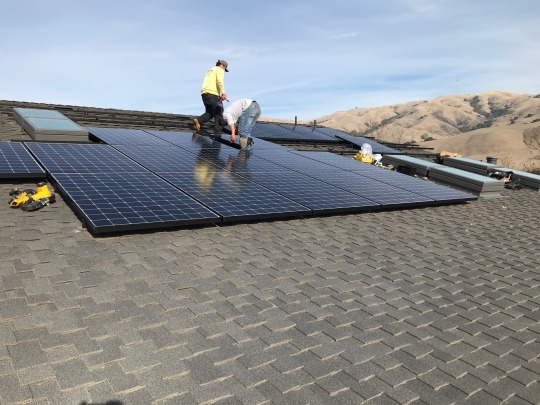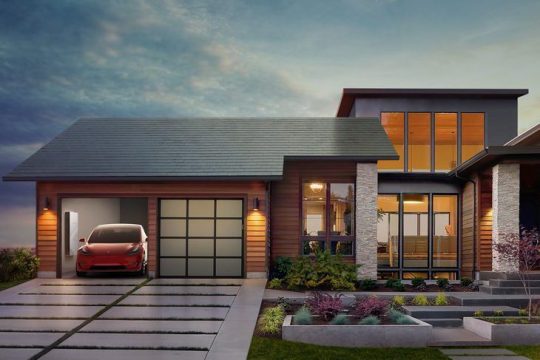Video
Busy launch area yesterday .. Pro Tip: don’t take a year off off your favorite excercise, ouch. (at Coyote Point Recreation Area.) https://www.instagram.com/p/CQ_1PSKHMpe/?utm_medium=tumblr
0 notes
Link
this is our reality, what are we gonna do? Not just wait and hope some stupid elected officials decide, thats over...but as a people what are we gonna do?

Excerpt from this story from National Geographic:
Water levels usually peak in May at Folsom Lake in California, rising as Sierra Nevada snowpack melts away and courses down to the reservoir, near Sacramento.
But this year, the drought that has gripped much of the U.S. West is already so strong that the lake is only half as full as normal. Instead of water, fields of purple lupines line vast swaths of dry lakebed.
Folsom Lake’s situation is emblematic of the deepening drought across the western United States. As of May 6, 67 percent of the region was in a state of “severe” drought or worse; a stunning 21 percent is already in “exceptional” drought, the worst category in the U.S. Drought Monitor’s framework. At Lake Mead, one of the two major reservoirs of the Colorado River, which some 40 million Americans depend on, water levels are creeping toward a threshold that would trigger the first official shortage declaration for the basin.
The situation is unlikely to improve in the near future, scientists say, as 2021 shapes up to extend the “megadrought” that researchers have found to be gripping the region mostly unabated since 2000.
The region would have been in a state of drought regardless, “but it’s really climate change that pushed this event to be one of the worst in 500 years,” says Ben Cook, a climate scientist at Columbia’s Lamont Doherty Earth Observatory.
Drought can take many forms. There’s “meteorological drought,” which compares how much rain or snow has fallen compared to a long-term average. There’s “hydrological drought,” which considers how much water flows through streams and rivers and is stored in mountain snowpack and underground aquifers. There’s the drought the soil, plants, and animals feel, called agricultural or ecological drought.
This year, by just about every measure, the West is extremely low on water. Most of California and the Four Corners states are somewhere between 25 and 50 percent of their long-term averages on most of the drought indicators. Snowpack in California on April 1, its usual peak time, hit only 59 percent of its long-term average and has already largely melted away, leaving it at a paltry 15 percent of its average at this date. Soils are parched. The Colorado and Rio Grande rivers are trickling compared to their long-term histories.
The U.S. Drought Monitor ties all of these many pieces together into a weekly, U.S.-wide snapshot, binning the on-the-ground drought situation into six categories from “none” to “exceptional.” On April 22 they reported that 21 percent of the West was in “extreme” or “exceptional” drought, the two worst levels—nearly three times the area ever listed in that category this early in the year in the Monitor’s 20-year history.
9 notes
·
View notes
Video
Should be keeping an eye on these guys!
youtube
BYD EA1 Hatchback with 600mile Range | Shanghai Auto Show Reveal
Paul Barron Network
BYD has announced at the 2021 Shanghai Auto Show an all-new e-platform 3.0 for the next-generation electric vehicles as well as unveiling the all-new hatchback EA1 model. The largest battery pack options should translate into a range of up to 600 miles (965 km) NEDC, probably closer to 400-450 miles (644-724 km) in the real world. The battery system will be 800 V, which will increase the overall efficiency, as well as allow to fast charge very quickly: 5 minutes to replenish 90 miles (145 km) at the peak. There is a new 8-in-1 module for the drive system for outstanding performance (0-60 mph in 2.9 seconds) and a new heat pump to minimize range loss from heating in winter. The BYD EA1 also has a variety of customizable trim options.
P.S. The NEDC test is too optimistic, but dividing it by a factor of 1.4, we are obtaining an realistic and quite impressive result - 690 km…
8 notes
·
View notes
Link
At least we are talking about this stuff, imagine if we can get politics out of the damn way?!
Excerpt from this story from the Sierra Club:
President Joe Biden celebrated Earth Day 2021 with a bang: He pledged to reduce US greenhouse gas emissions by more than 50 percent below 2005 levels by 2030.
In two recent studies, Hultman, now director of the Center for Global Sustainability at the University of Maryland, modeled the plausible pathways to achieving at least a 50 percent reduction by 2030. Here’s what it would take to get there:
Electricity Generation. Emissions reductions from the electricity sector could account for more than half of Biden’s goal. By 2030, half of the country’s electricity would need to come from renewable sources such as wind, solar, or hydropower—and that’s more than four times today’s levels. Virtually all of the country’s remaining coal plants would need to shut down unless they incorporate technology that captures carbon dioxide instead of releasing it into the atmosphere. And starting in 2025, nearly all new natural gas plants would need to capture their emissions and bury them underground.
Transportation. To meet Biden’s target, roughly two-thirds of the new cars sold at dealerships would need to be powered by electricity, not gasoline. That’s up from 2 percent today. A recent IHS Markit report illustrated the long road we face to achieve transportation electrification. It projected that just a quarter of new car sales will be fully electric by 2030.
How, then, to make up the difference between current market projections and the president’s goal? The administration has a couple of tools at its disposal.
Biden has already signed an executive order directing federal agencies to buy zero-emission vehicles, and his new infrastructure and clean energy plan would allocate $174 billion to advance the transition to electric cars and help states and cities install a network of 500,000 vehicle-charging stations by 2030. At the same time, companies such as Amazon and FedEx are replacing their fleets with electric delivery vehicles. General Motors has pledged to completely phase out the internal combustion engine by 2035.
Buildings. In 2019, buildings in the United States emitted the greenhouse gas equivalent of 577 million metric tons of carbon dioxide. Gas appliances such as furnaces and stoves are partially to blame. Each year, the infrastructure that funnels gas to buildings and homes leaks enough methane (a greenhouse gas 86 times more potent than carbon dioxide) to match the emissions of all vehicles in the country. To meet Biden’s goal, all new buildings would need to be heated by electricity rather than natural gas.
Oil and Gas Overhaul. To avoid climate catastrophe, sometime this century the world’s oil and gas corporations and petro-states will have to move past selling fossil fuels. In the short term—meaning, between now and 2030—oil and gas producers must at the very least slash emissions of methane by 60 percent to achieve the Biden goal. For starters, this would mean reinstating and strengthening an Obama-era rule that required companies to detect and repair methane leaks at new drilling sites and was rolled back by Donald Trump last summer.
Reforestation. An old-fashioned technology known as trees are one of the best ways to draw down the excess carbon in the atmosphere. And that means that preserving existing forests while reforesting degraded lands is a key strategy to meeting Biden’s ambitions. The nation’s forests would need to expand so that they pull 20 percent more carbon dioxide out of the air than they do today. According to a recent study of national forests published in the Proceedings of the National Academy of Sciences, this would mean reforesting at least 81 million acres.
53 notes
·
View notes
Video
One year check in on a customer and i cant resist going up for a look.. clean panels are happy panels! #savingmoney #sunpower #sunnyvale #boston (at Sunnyvale, California) https://www.instagram.com/p/COJw93tnIKz/?igshid=1fnqbk8npkmve
2 notes
·
View notes
Photo

This is what I get for having a car that needs the 91. Where’s my EV ?! #savingmoney #newengland #solarbayarea (at San Jose, California) https://www.instagram.com/p/COG7HNHFZmm/?igshid=1kalxg5rddbp8
0 notes
Text

They sure do! on an overcast and rainy day like today in the San Francisco Bay area a typical solar system will still produce about half as much as it would on a nice sunny day. that’s not too bad considering! 
5 notes
·
View notes
Photo

Yes you can add panels to an existing system on your home or business! These folks in Morgan Hill are doing just that to keep close to a net zero electric footprint! #sunpower #solarenergy #bayarea (at Anderson Reservoir) https://www.instagram.com/p/CLu4LPwF-LT/?igshid=jbncmhb9jj6v
0 notes
Photo

Another new home going solar with SunPower... new year, fresh clean start! (at Fremont, California) https://www.instagram.com/p/CLGhoXKFOa9/?igshid=1wzst6jn30nfu
1 note
·
View note
Text

Soon to be home of 36 new SunPower panels up here!
1 note
·
View note
Text


Some folks getting some nice clean quiet power on there roof for Christmas.
1 note
·
View note
Photo

Maintenance day...New inverter and re-string of some slightly older sunpower panels. And then a much needed wash with all the smoke we had this year! (at Saratoga, California) https://www.instagram.com/p/CGv4iqolQVq/?igshid=1t9h1cp6p1n1o
1 note
·
View note
Text
Wholly agree thank you! If fresh are more breathable air were the only thing to come out of all the clean energy efforts wouldn’t that be worth it alone?
I dont get why you'd not want to make the transition to a greener world, even if you didn't believe in global warming.
Worst thing that could happen is you've built a sustainable healthy future and (sarcasm) those pesky "what do they know" highly trained scientific experts will be off your case about the world burning.
Just my two cents

44 notes
·
View notes


